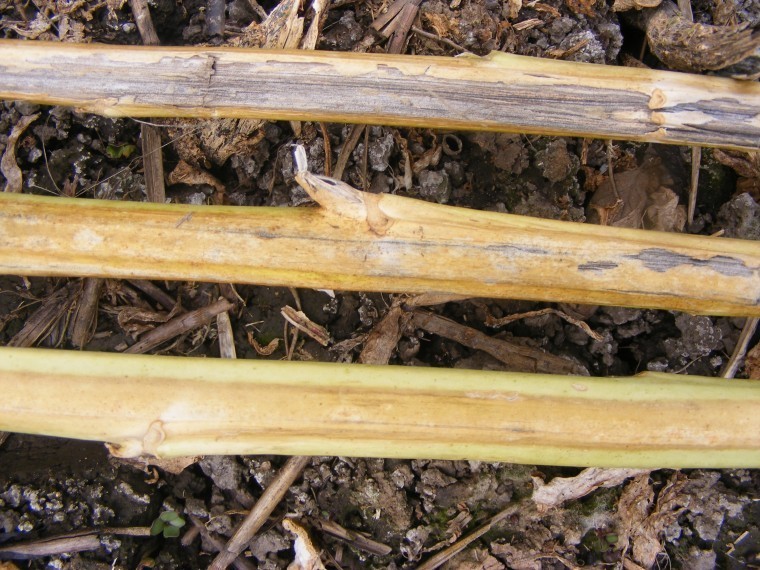Unlike other yield reducing diseases of rape, soil-borne or seed-borne Verticillium stem stripe has no chemical solution. “If you have Verticillium in your soils, it can be there for many years and the main way to live with it is to grow a variety which has good Verticillium resistance. You have little other choice. Extending rotations is likely to be impractical and there are no approved chemicals. For those who have seen or see it this harvest, they need to make a proactive decision to grow a resistant variety this autumn,“ says plant pathologist Dr Faye Ritchie of ADAS Boxworth.
AHDB has been looking at ways of introducing a resistance rating for Verticillium in the AHDB recommended list and hopefully this will be introduced in 2020. Dr. Ritchie reports that symptoms are seen when the crops starts to ripen usually towards the end of June or early July. “Look out for premature ripening of branches and grey stripes down stems, often on one side only, but it can be the whole cross-section of a stem. Underneath these vertical stripes, when the outer stem layer is peeled off, you will see grey vascular tissue and using a hand lens, you can see tiny black dots or microsclerotia. The microsclerotia are assumed to survive in the soil for over 10 years to infect subsequent crops, germinating in response to root exudates.”
Faye says that last year the DEFRA oilseed rape disease survey reported the levels of Verticillium were low, at just 5% of crops affected nationally. “The highest levels regionally were in the Midlands, with over 20% of crops affected. In 2017 the percentage of crops affected nationally was 20%.”
“To control Verticillium sustainably, you must use resistant varieties,” says Neil Groom, technical manager for Grainseed. “Once you have identified it, you need to start thinking seriously about how to manage it.”
“Unlike other diseases of rape, there is no approved fungicide to control it and so growers must rely on cultural control measures – growers must choose varieties with known resistance and avoid using seed from crops known to have the disease. AHDB trials have shown distinct differences between varieties. Tested on sites with known Verticillium infection, varieties which are close to the reference variety Catana are classified as tolerant. Other ones which are similar to Quartz are classified as susceptible. Most Grainseed oilseed rape varieties including Es Mambo, Es Decibel CL, Keeper, Elevation and Es Alegria have proven resistance to Verticillium, following several years’ independent trials and commercial experience.”
Neil advises rape growers to think the in the same way wheat growers think and select their rape varieties which have good combined disease resistance ratings. “In cereals growers don’t think twice about studying disease resistance ratings in detail before choosing their variety. Why is this not the case for rape varieties? A good variety needs to have resistance to Verticillium, Phoma and light leaf spot. Es Mambo has a 7.8 rating for Phoma stem canker, a 6.4 for light leaf spot plus it is the Number 1 performing variety in AICC Verticillium trials. Es Alegria has a 7.4 rating for Phoma, 5.4 for light leaf spot and good tolerance to Verticillium as well. Keeper has a 7 rating for Phoma, 6 for light leaf spot and has Verticillium resistance. Genetic resistance to Phoma in our varieties is multi-gene thus making it durable.”
When growers are looking at their growing costs, choosing a variety where you can be sure of its strong disease resistance across the board can save you money, says Neil.
Faye Ritchie warns that in the worst case analysis Verticillium can cause yield loss of up to 50%: “This is what happens in Sweden where this disease is particularly serious, although losses vary from year to year. In the UK, there is limited data on yield losses, however, it suggests that using a more resistant variety where Verticillium is present will protect yield. High risk conditions include warm, dry springs, tight rotations, use of infected seed and stressed crops.”
Verticillium stripe symptoms




